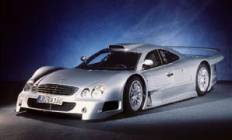
Home
News
About Us
The Cars
History of Street Racing
Links |
Almost every night, thousands of young drivers will enter into a game of car and mouse with local law enforcement officials. It happens in virtuality every major city acrss the United States. While their parents sleep, these young men and women risk life and limb, sometimes in their own cars, sometimes in the family car, some by merely spectating. Yet despite the repeated accidents, the arrests and the danger and risks associated with illegal street racing, this activity has been goingon for over 50 years. Street racing is something that has been passed onto the new generation by parents and our older siblings, these young men and women didn't invent it, but they have taken it a whole new level. Remarkably, little has changed over the last 50 years. The badges on the cars that one read "Chevy" or "Ford" now read "Honda" or "Toyota". This is laregely due to the increasingly popularity of smaller cars with are cheaper tp insure but can be radically modified. Back in the 50's and 60's, their parents tuned their Chevys with screwdrivers and crescent wrenches; today's cars are tuned with laptops and algorithms, the technology has advanced that drastically.
However, one timeless element has been the police's utter inability to curtail or eliminate this problem. Today, with larger cities seeing a boom in development, real estate has become so valuable, race tracks that were once in isolated locations now find themselves on prime property. The tracks quickly make way for housing sub division. With fewer and fewer places to race, these kids are left with just a few pieces to showcase the power of their cars. These racers learned yet another lesson from their parents: where tracks don't exist, improvise. Now, virtually any isolated industrial area can be transformed into a drag strip; all that is needed is a good stretch of smooth road, some dilligen reconnaissance and the participants will come in droves. On any given night, in any location frequented by street racers, on can expect to see between 50 and 200 cars with upwards 3000 people.
The MO is always the same: cars gather at a "staging" point, such as at a restaurant or gas station. There challenges are made; a convoy of one to of many possible locations forms. After a little careful scouting for law enforcement, the racers descend on the location. Most are there to watch, but a few accept the risks and ulimately find themselves racing. The more midly modified cars typically reach speeds of about 70 mph over a distance of about a quarter of a mile. But when the fast guys show up, watch out. The faster guys are usually a little older, some our parents age. The cars vary from 120 horsepower to over 800 hp. These cars can easilly hit 150 mph in the quarter mile. Having attened many a street race, I can tell you that most accidents occur when people pull out from the car without having checked for oncoming racers. Others occur when people stand too close to the racing action. Only rarely do cars lose control and crash into specators or other cars. Its dangerous, yes, but it is a rush that people of all ages enjoy.
In some cities, police simply monitor the activites, choosing to intervene when people get out of hand. In other cities, elaborate raids are planned where hundreds of law enforcement agents swoop in and raid the area, impound cars make arrests and shut down the area. If the cops show up, the racers move on to alternate locations sprinkled throughout the city.
The racing acitivity is sometimes just a backdrop for what is also a "hang out" spot, a sort of social enviroment were girls, loud music, and some casual dancing occupies the time of non-racers.
Many wonder what the attraction is. Quite simply, we live in a car culture. To young men and women over the last 50 years, cars have represented freedom and independence; freedom to come and go as they please, independence from one's parents. As time passed, automobiles became a symbol of expression and even parents find themselves buying cars to "make a statement." These are some of the basic elements behind street racing, but the catalyst is adrenaline. Every young person enjoys a rush, some find it through illegal substances, others find it in gasoling. When you mix these ingredients together, the combination can be deadly.
At street races, the combination of sub-compact sport cars sporting over 300 horsepower, adrenaline and young people wishing to make a statement lead to some wild antics. With the advent of computer technology, the availability of high performance components and the seemingly greater access to knowledge, racers can transform even the most mundane commuter cars into super cars producing prodigious amounts of power that border on the obscene. Image a \\$10,000 car that, after some work can travel at speeds in excess of 180 mph! cars that can out accelerate most Ferrari's and out corner many Porches. Your sons and daughters may by driving such a car right now.
Admittedly, for some of us, our car passion is merely a hobby, a form of expression. The cars become our canvass on which we create images of speed, power and beauty. But for those not satisfied with the impression made by the mere creation of the finished product, there's always a race in which we can showcase our accomplishments.
Back to Top
|